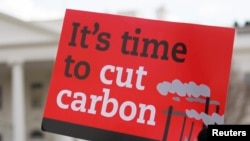In a settlement agreement with the United States Government, Safeway, the nation’s second largest grocery store chain, has agreed to pay a $600,000 civil penalty and implement a corporate-wide plan to significantly reduce its emissions of ozone-depleting substances from refrigeration equipment at 659 of its stores nationwide, estimated to cost approximately $4.1 million, the U.S. Environmental Protection Agency (EPA) and Department of Justice announced September 4th.
The settlement involves the largest number of facilities ever under the Clean Air Act’s regulations governing refrigeration equipment.
The settlement resolves allegations that Safeway violated the federal CAA by failing to promptly repair leaks of HCFC-22, a hydro-chlorofluorocarbon that is a greenhouse gas and ozone-depleting substance used as a coolant in refrigerators, and failed to keep adequate records of the servicing of its refrigeration equipment.
Safeway will now implement a corporate refrigerant compliance management system to comply with stratospheric ozone regulations. In addition, Safeway will reduce its corporate-wide average leak rate from 25 percent in 2012 to 18 percent or below in 2015. The company will also reduce the aggregate refrigerant emissions at its highest-emission stores by 10 percent each year for three years.
“Safeway’s new corporate commitment to reduce air pollution and help protect the ozone layer is vital and significant,” said Cynthia Giles, Assistant Administrator for EPA’s Office of Enforcement and Compliance Assurance. “Fixing leaks, improving compliance and reducing emissions will make a real difference in protecting us from the dangers of ozone depletion, while reducing the impact on climate change.”
HCFC-22 is up to 1,800 times more potent than carbon dioxide in terms of global warming emissions. The measures that Safeway has committed to are expected to prevent over 100,000 pounds of future releases of ozone-depleting refrigerants that destroy the ozone layer.
HCFCs deplete the stratospheric ozone layer, which allows dangerous amounts of cancer-causing ultraviolet rays from the sun to strike the earth, leading to adverse health effects that include skin cancers, cataracts, and suppressed immune systems. Pursuant to the Montreal Protocol, the United States is implementing strict reductions of ozone-depleting refrigerants.
“This first-of-its-kind settlement will benefit all Americans by cutting emissions of ozone-depleting substances across Safeway’s national supermarket chain,” said Robert G. Dreher, Acting Assistant Attorney General for the Justice Department’s Environment and Natural Resources Division. “It can serve as a model for comprehensive solutions that improve industry compliance with the nation’s Clean Air Act.”
The settlement involves the largest number of facilities ever under the Clean Air Act’s regulations governing refrigeration equipment.
The settlement resolves allegations that Safeway violated the federal CAA by failing to promptly repair leaks of HCFC-22, a hydro-chlorofluorocarbon that is a greenhouse gas and ozone-depleting substance used as a coolant in refrigerators, and failed to keep adequate records of the servicing of its refrigeration equipment.
Safeway will now implement a corporate refrigerant compliance management system to comply with stratospheric ozone regulations. In addition, Safeway will reduce its corporate-wide average leak rate from 25 percent in 2012 to 18 percent or below in 2015. The company will also reduce the aggregate refrigerant emissions at its highest-emission stores by 10 percent each year for three years.
“Safeway’s new corporate commitment to reduce air pollution and help protect the ozone layer is vital and significant,” said Cynthia Giles, Assistant Administrator for EPA’s Office of Enforcement and Compliance Assurance. “Fixing leaks, improving compliance and reducing emissions will make a real difference in protecting us from the dangers of ozone depletion, while reducing the impact on climate change.”
HCFC-22 is up to 1,800 times more potent than carbon dioxide in terms of global warming emissions. The measures that Safeway has committed to are expected to prevent over 100,000 pounds of future releases of ozone-depleting refrigerants that destroy the ozone layer.
HCFCs deplete the stratospheric ozone layer, which allows dangerous amounts of cancer-causing ultraviolet rays from the sun to strike the earth, leading to adverse health effects that include skin cancers, cataracts, and suppressed immune systems. Pursuant to the Montreal Protocol, the United States is implementing strict reductions of ozone-depleting refrigerants.
“This first-of-its-kind settlement will benefit all Americans by cutting emissions of ozone-depleting substances across Safeway’s national supermarket chain,” said Robert G. Dreher, Acting Assistant Attorney General for the Justice Department’s Environment and Natural Resources Division. “It can serve as a model for comprehensive solutions that improve industry compliance with the nation’s Clean Air Act.”
















